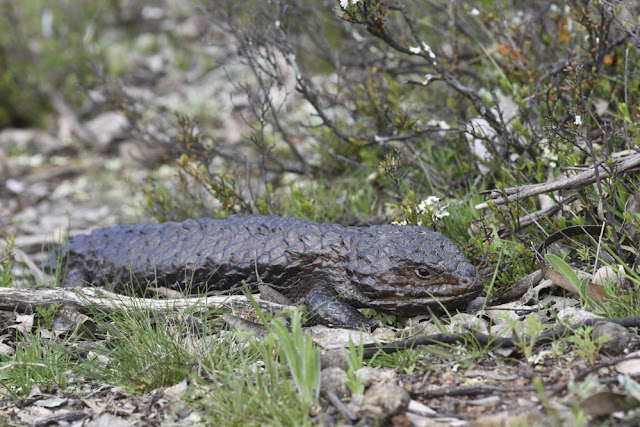 |
| A Quenda, Southern Brown Bandicoot Isoodon obesulus |
I am over in Perth, Western Australia for ten days helping Simon Cherriman monitor, ring and tag wedge-tailed eagles, more of that in a later post, for now here are a few images of the local wildlife, starting with a sample from the garden.
 |
| Simon sets off down the front drive to hang some nest boxes for black cockatoos around a local school |
The house sits in a large rural residential block with a mix of local and introduced flora. And Simon has put several nest-boxes up for various parrot species, owls and ducks, as most of the trees are too young to have natural holes large enough for these large birds.
 |
| Morning light on a corner of the garden |
The mix of water in the dams, boxes to nest in and grass to eat make the garden a great breeding area for Australian Wood Ducks Chenonetta jubata.
 |
| Gum trees reflected on the lower dam |
 |
| A pair of Australian Wood Ducks with their brood of three well-grown ducklings |
There are numerous nectar-bearing shrubs such as bottlebrushes Callistemon spp and these are full of honeyeaters feeding from the flowers.
 |
| A New Holland Honeyeater Phylidonyris novaehollandiae |
There are four species of honeyeater in the garden, all fighting and chasing one another for the nectar: Red Wattlebirds Anthochaera carunculata are top of the hierarchy as they are the largest, then there are the Western Wattlebirds A. lunulata, the New Holland Honeyeaters and finally the Western Spinebills Acanthorhynchus superciliosus
 |
| A Western Wattlebird feeding on a bottlebrush bush |
My morning started with a great view of a Quenda exploring the front porch.These are charming little marsupials, and a small population live in the garden, foraging in the leaf litter mostly at night and sleeping in nests under the litter during the middle of the day.
 |
| An adult male quenda on the front doormat |
When I went out for a walk around the garden in the early morning, a young quenda came right by me and began foraging in the mulch for invertebrates.
 |
| They burrow their snouts right under the litter, sniffing and probing for food |
The youngster was quite unafraid of me as I squatted down and watched it going about its business.
But I had to be quick with the camera as the little quenda could move quickly when it decided to. It was good to see a native animal thriving in a garden setting. The conditions are good for them; they have food and shelter, and it is a cat-free zone, so the population is probably exporting animals out to the surrounding native bushland. What a terrific wildlife garden.












































